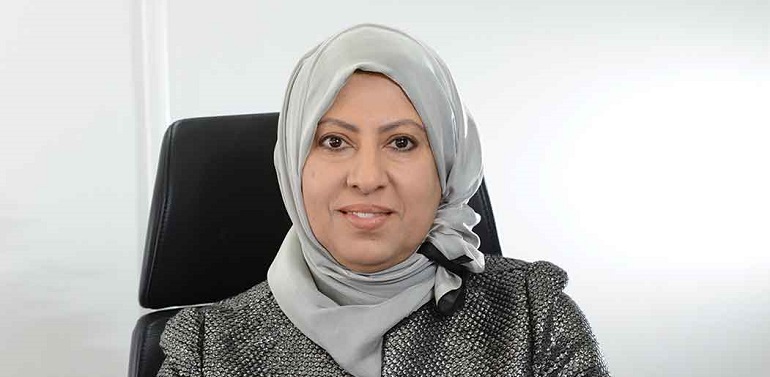Experts
Committed to Excellence – PDO’s Corporate Planning Director Ruqaiya Al Hinai

Secondly, from an internal perspective, the various directorates and individual functions have their own set of priorities. We align these through our “One PDO” approach. This forces all staff to consider what’s best for PDO. By outlining PDO’s key objectives in a “One PDO” scorecard, we strengthen ownership of joint performance. The thematic approach I outlined earlier is also of great help to make the right connections and focus across the organisation. It’s amazing what can happen if you bring the right people into the room and just get them to talk about their blockers and barriers which limit their performance.
On contractors, the collaborative environment and long-term relationship plays an important role. Yes, a good contract is a pre-requisite; however, secondly, we have to work together through a difficult business environment. PDO has chosen a more collaborative approach to reduce contract costs. Contractors understand that costs need to go down, yet they also need to be solvent, meet their shareholder objectives and pay employees. There certainly is a stick-and-carrot element in the relationship and the balance may shift with time as circumstances dictate. At all times, PDO is keen to maintain its business principles and remain a reliable partner with clear objectives. This fosters a long-term relationship with its contractors, which has proven to be mutually beneficial.
IN YOUR OPINION, WHAT ARE GOING TO BE THE KEY GROWTH DRIVERS FOR PDO IN THE COMING YEARS AS THE WORLD CONTINUES TO BE INCREASINGLY DRIVEN BY DISRUPTIVE TECHNOLOGIES AND, SIMULTANEOUSLY, OMAN MAKES AN AGGRESSIVE PITCH TOWARDS ECONOMIC DIVERSIFICATION?
A disruptive technology could be the complete displacement of conventional energy by an alternative energy source. Let me put that to one side for the moment on the basis that this is unlikely to occur overnight.
Secondly, we welcome disruptive technologies, particularly if these support us to produce hydrocarbons more safely and efficiently. It is our job to be on top of innovation and leverage these technologies and implement them to our competitive advantage. Whilst this is a challenge for a company the size of PDO, we are well set-up to lead or follow innovation. We do this by mapping our technology challenges and are very clear on how these would add value to the business.
Next, we share these challenges externally, either through university collaboration or a direct approach to academia, our shareholder organisations, major service providers, technology institutes or our colleague operators in Oman and the region. Aside from this, we go external via our Technology Provider Hub, where anyone can offer solutions to the stated challenges.
Similarly, Oman’s drive towards economic diversification is fully supported by PDO with a wide range of measures that include creating jobs and opportunities outside the oil and gas sector. Incremental local activity needs to be powered, which is exactly the business that we are in.
But let me now come back to the core of your question: “what are going to be the key growth drivers for PDO in the coming years?”
The answer is locked up in the priorities that we discussed earlier, but driven by our core stakeholders’ needs, mainly the government and people of Oman. They determine the pace of development within which PDO can optimise its activity. Whilst new big oil and gas discoveries will become less frequent, PDO has very large discovered volumes originally in place to chase, some 65 billion barrels in the case of the Company’s block 6 concession. This is despite over 50 years of production, and there remain many opportunities to chase.
The growth will come from a mix of development options.
First is the improvement of the ongoing developments with water flooding offering relatively low unit technical cost opportunities. This will be coupled with the optimisation and efficiency improvement of the current assets in the form of asset rejuvenation projects.
Second is the monetisation of smaller new oil and gas accumulations, effectively leveraging our existing infrastructure. One can expect standardised mini developments, which are supported by an infrastructure backbone to provide power, water injection and production evacuation across promising trends. This will be labour intensive, particularly in terms of wells. These developments would typically come in between $15-25/bbl.
-

 Real Estate2 months ago
Real Estate2 months agoAl Mouj Muscat Unveils Azura Beach Residences Phase 2: A New Chapter in Waterfront Living
-

 Leaders Speak1 month ago
Leaders Speak1 month agoDhofar International Development and Investment Company: Driving Sustainable Growth and Strategic Synergies in Oman’s Investment Landscape
-

 Events1 month ago
Events1 month agoOER Corporate Excellence Awards 2025 Honours Entities and Innovations in Oman
-

 Economy1 month ago
Economy1 month agoMaal Card: What Oman’s New National Payment Card Means for Everyday Users
-

 OER Magazines2 months ago
OER Magazines2 months agoOER, October 25
-

 Arts and Culture2 months ago
Arts and Culture2 months agoOminvest and Bait Al Zubair Launch “Future Frames” to Empower Youth through Art and AI
-

 Entertainment2 months ago
Entertainment2 months agoWhere Heritage Meets Haute Couture: Al Sadaa Haute Couture Transforms the Sultanate’s Fashion Scene
-

 News2 months ago
News2 months agoMs. Noor Saldin, Founder of Modern Generation International School, Wins Woman of the Year 2025; School Honored for Empowering Future Female Leaders































You must be logged in to post a comment Login